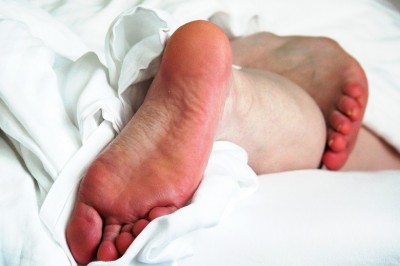Orthotics for Hammertoe
Hammertoe is a common foot deformity that occurs when the toes become locked into a permanently bent position. They are often caused by wearing ill-fitting footwear, particularly high-heeled shoes, which force the toes into a bent position. Anatomically speaking, hammertoes occur due to a muscular imbalance between the tendons on the top and the bottom of the toe, which causes the tendons on the bottom of the toe to become permanently contracted. A hammertoe can either be flexible or rigid. A flexible hammertoe can be straightened with effort or by manipulating it with the fingers, while a rigid hammertoe remains permanently bent. The only way to cure a rigid hammertoe is surgery. But flexible hammertoes can be reversed by wearing custom orthotics.
A podiatrist can prescribe a functional orthotic for hammertoe. This orthotic will slow down the development of the deformity and may even reverse it over time. The orthotic usually attaches to the back of the toes using a toe loop that wraps around the toes like a ring. It is designed to reduce forefoot pain, relieve stress on the metatarsals and reduce irritation on the tips of the toes. Over time the orthotic can help to equalize the underlying muscular imbalance that is causing the hammertoe in the first place. These orthotics should come in different sizes and should be replaced frequently.
Some people with hammertoe like to buy over-the-counter orthotics such as corn or callus pads to treat the condition. While these can help alleviate some symptoms of tenderness and pain, they wont reverse the problem. Beware of corn and callus pads that use mild acids to burn off the hardened skin. These medicated orthotics should never be used between the toes because the skin will become irritated.
In addition to functional orthotics, hammertoe can be treated (and sometimes reversed) in a variety of ways. Taking some time off from closed toed shoes is a great way to start. (You should definitely avoid high heels that push your feet forward in the shoe!) It is a good idea for people with hammertoe to invest in a pair of orthopedic sandals. These open toed shoes will not cramp the toes, and they will give your arch, heel, Achilles tendon and the ball of your foot the orthopedic support they need. Stretching your calf muscles on a regular basis is another easy way to alleviate the symptoms of hammertoe. Regular stretching of these muscles will help undo the muscular imbalance in your toes.
Jane Barron works for OddShoeFinder.com,a free online website that helps people find mismatched footwear.Get more information on deformed feet, corrective shoes or foot length difference.





















